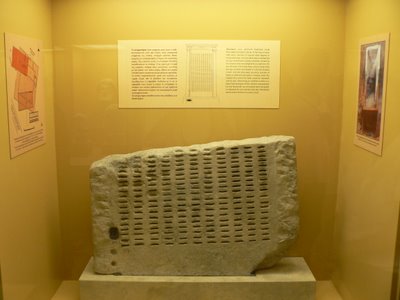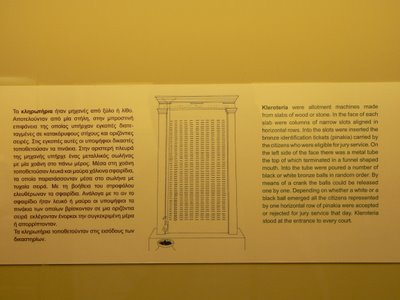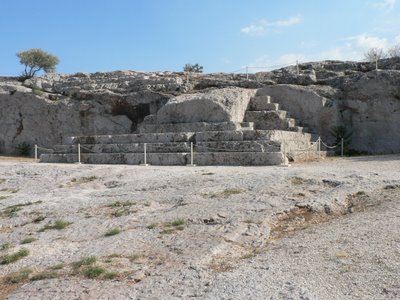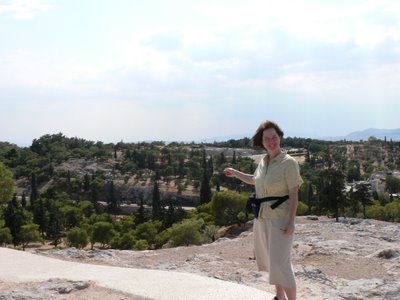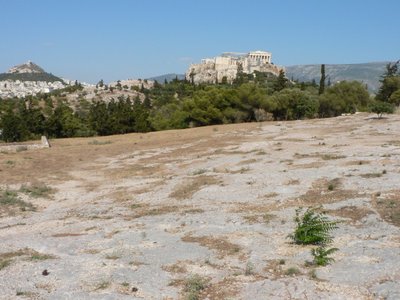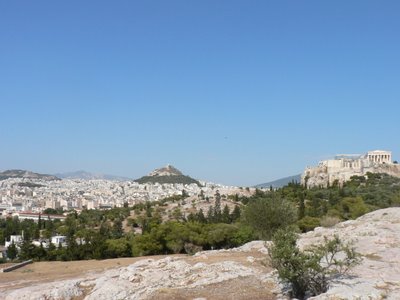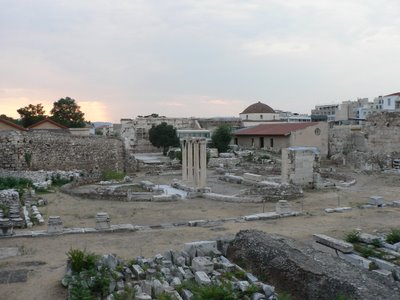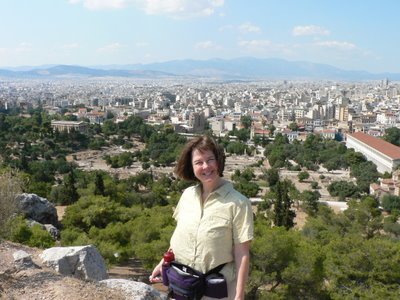
This first photo is taken from the Acropolis looking down at the marketplace (Agora).

The second photo is taken from the marketplace looking up at the Acropolis. On the right, you can see the hill on which the homicide court met (the Areopagos).
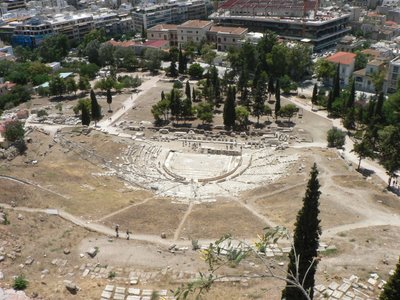
The third photo is looking down at the Theater of Dionysus from the height of the Acropolis (temple of Athena). I had not before thought about how a theater was a civic space. The Greek tragedies and comedies were an essential part of civic education for Athenian citizens. I'll expand on this later.

The last photo (somewhat blurry) is taken from the Acropolis and looks down on the homicide court on the left and lower down on the right the marketplace.
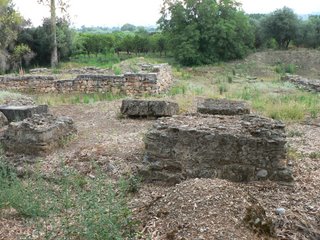 This is the sanctuary of Artemis Orthia at Sparta. Spartan boys had to run up to the Temple (which is the square building in the background) and steal something while men flogged (whipped) them. This was designed to be a test of endurance. Boys frequently died during this ritual. Legend said Artemis was not satisfied until her altar was covered with blood. The block in the front of the photo are remains of the stands later erected by the Romans to watch this spectacle for entertainment. The existence of the ritual and the stands tells us something essential about the Spartans and about the Romans.
This is the sanctuary of Artemis Orthia at Sparta. Spartan boys had to run up to the Temple (which is the square building in the background) and steal something while men flogged (whipped) them. This was designed to be a test of endurance. Boys frequently died during this ritual. Legend said Artemis was not satisfied until her altar was covered with blood. The block in the front of the photo are remains of the stands later erected by the Romans to watch this spectacle for entertainment. The existence of the ritual and the stands tells us something essential about the Spartans and about the Romans.






